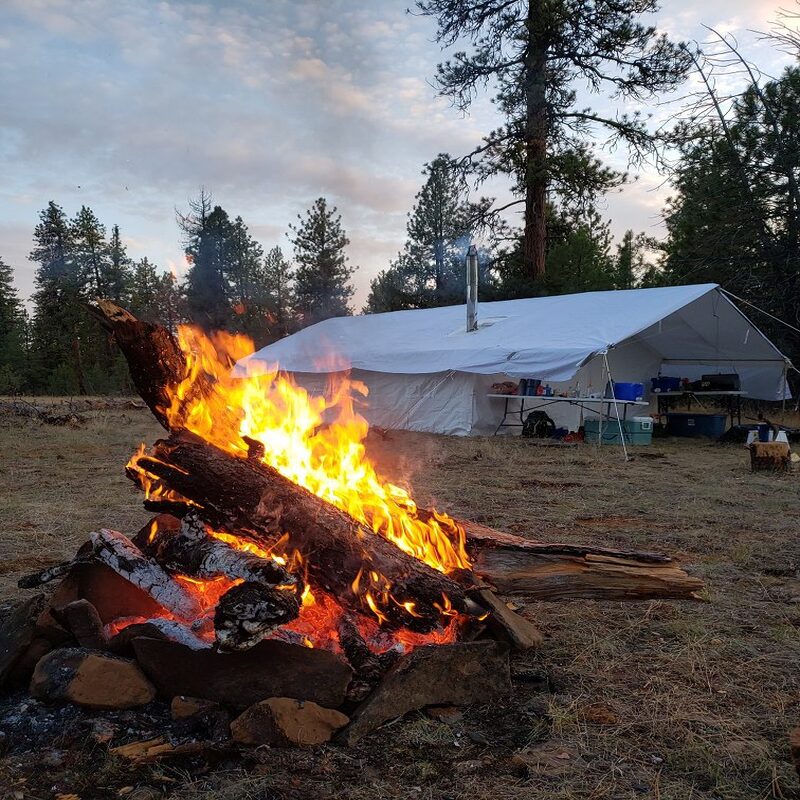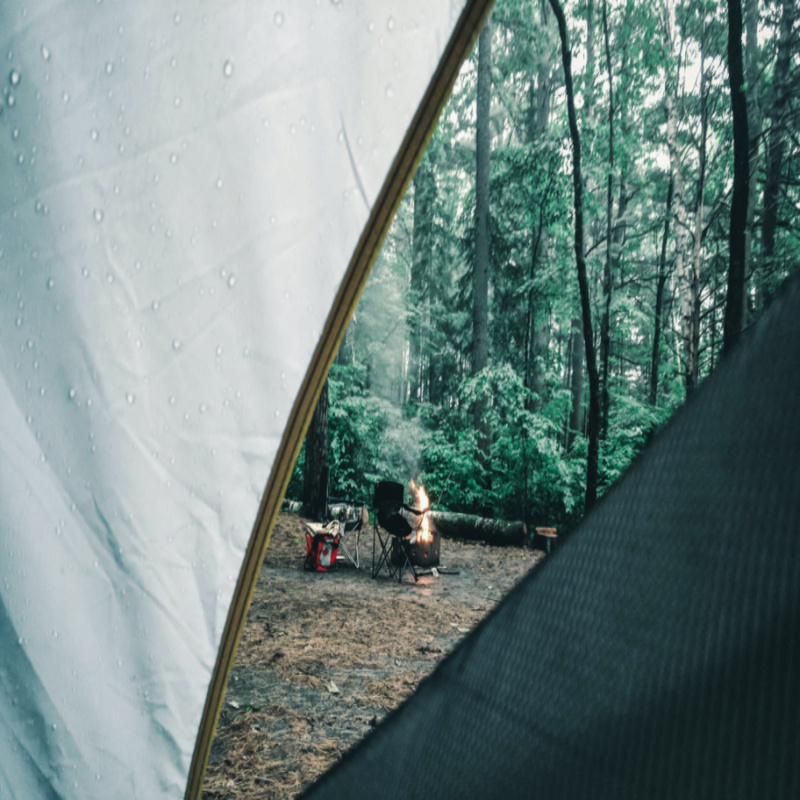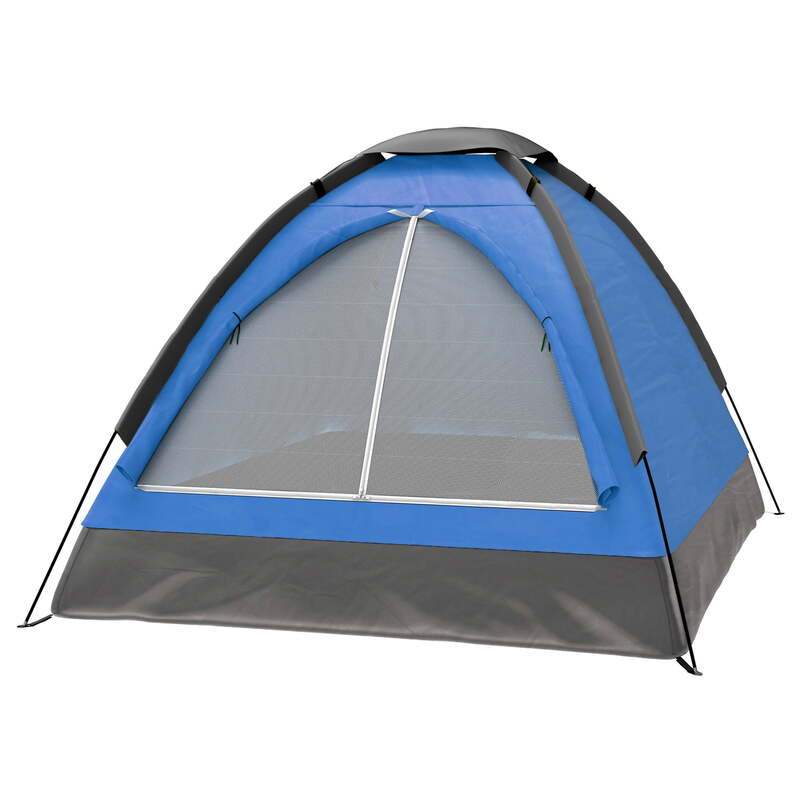Venturing into the wilderness offers a unique opportunity to connect with nature. However, staying warm while camping can be a challenge. Especially when electricity isn’t available to provide heat. Fortunately, there are various methods to heat a tent without electricity. These methods rely on tried-and-true techniques, efficient use of gear, and a touch of creativity. This article delves into practical and innovative solutions for maintaining warmth inside a tent. Categorized into different sections, these techniques ensure that every camper can find the most suitable method for their needs.
Strategic Tent Placement
Where you pitch your tent can significantly influence its internal temperature. Choosing the right location is the first step toward a warm night’s sleep.
Terrain and Natural Shelter
Your tent’s location influences how cold you’ll feel during the night. It’s essential to choose your campsite thoughtfully. Ideally, pitch your tent on flat, high ground. Low-lying areas tend to collect cold air, making your tent chillier. Flat grounds facilitate even heat distribution throughout your tent. Meanwhile, sheltered areas, like spots behind trees or large rocks, shield your tent from icy winds. Natural barriers help create a cozy nook, effectively warding off wind chill. Avoid open fields and exposed ridges; they leave your tent vulnerable to wind and cold, sapping away precious warmth.
Facing the Morning Sun
Orient your tent to face the morning sun. This strategy ensures that the rising sun heats the tent early, providing an often-needed temperature boost. Make sure the tent door is towards the east to catch the first rays. This tactic leverages solar heat to naturally and gradually warm your tent. If you have a clear view of the horizon, your tent will warm up as soon as the sun rises. This simple step can make morning wake-ups much more pleasant. This approach works particularly well in clear weather conditions.

Insulating Your Tent
Proper insulation can make a significant difference in maintaining a warm environment inside your tent. There are multiple methods to insulate effectively.
Ground Insulation
The ground can sap heat from your body more quickly than the air. Thus, insulating the ground beneath your tent is critical. Start with a high-quality sleeping pad or foam mattress. These items effectively block cold from seeping up from the ground. Adding a reflective emergency blanket under your sleeping pad can further improve insulation. Additionally, straw or dry leaves can be used as a natural insulative layer. This technique provides an extra barrier against the cold, making your sleeping area warmer. Ground insulation is a crucial element often overlooked by novice campers.
Tent Layers and Thermal Blankets
Adding multiple layers to your tent can trap heat and maintain a warm interior. Double-walled tents inherently offer better insulation than single-walled counterparts. Draping thermal blankets over your tent can add another layer of warmth. You can also attach thermal blankets inside the tent walls. These specially designed blankets reflect body heat back. This method reduces the loss of heat through the tent fabric. Investing in high-quality thermal blankets can thus significantly contribute to a more comfortable, warm camping experience. Moreover, they are lightweight and easy to carry, making them an ideal choice for campers.
Heating Devices and Tools
While electricity is off the table, several devices and tools can still provide warmth effectively. Understanding how to use these tools is crucial to heat a tent without electricity.
Portable Gas Heaters
Portable gas heaters serve as an excellent heat source for tents. These devices are fueled by propane or butane gas canisters. Modern portable heaters come equipped with safety features like oxygen depletion sensors and tip-over switches. Always ensure proper ventilation to prevent carbon monoxide buildup. A gas heater can quickly warm small spaces, making it ideal for tent use. However, turn off the heater before sleeping to avoid safety risks. Their compact design makes them easy to pack and transport. This method provides an efficient yet straightforward way to heat a tent.
Hot Water Bottles
Hot water bottles offer a simple, effective method for heating a tent. Fill these bottles with boiling water, and they can retain heat for several hours. Wrap the bottle in a cloth to avoid direct contact with skin, preventing burns. Place hot water bottles in your sleeping bag before you turn in. This strategy pre-warms your bed and keeps it warm for hours. Alternatively, distribute multiple hot water bottles around the tent to spread the heat evenly. Combining hot water bottles with other methods can exponentially improve overall warmth. They are reusable and easy to prepare, making them a popular choice among campers.

Utilizing Body Heat
Body heat is a natural and efficient way to keep your tent warm. Understanding how to trap and maximize this heat source is essential.
Layered Clothing and Sleeping Bags
Layered clothing is a fundamental principle for retaining body heat. Begin with moisture-wicking base layers to keep sweat away. Add insulating layers, such as fleece or down. Finish with a windproof and waterproof outer layer. These layers work in tandem to trap heat while allowing moisture to escape. Similarly, invest in high-quality sleeping bags rated for the temperatures you expect. Mummy-style sleeping bags are particularly effective as they contour closely to your body. Using a sleeping bag liner can add an extra layer of warmth, sometimes increasing warmth by 10 degrees Fahrenheit.
Sharing Warmth
Sharing a tent with a companion naturally increases the total body heat. This method can significantly warm your tent space. More occupants can lead to a warmer environment, as each person’s body heat contributes collectively. Moreover, snuggling up can help maintain body warmth. However, ensure that the tent size is appropriate. Overcrowding can lead to a lack of ventilation, creating condensation and discomfort. Balancing proximity with airflow is key to utilizing this method effectively. Sharing warmth is not only practical but also enhances the communal camping experience.
Natural and Creative Heating Methods
Sometimes unconventional methods provide the most effective solutions. These creative techniques can help heat the tent effectively without the need for electricity.
Rock Heating
Using heated rocks is an ancient but reliable method for tent heating. First, gather medium-sized, dry rocks. Heat them in a campfire, taking care to avoid direct contact with flames. After they are sufficiently hot, wrap the rocks in a towel or blanket. Place these wrapped rocks inside the tent perimeter. The rocks will slowly release heat, warming the tent for hours. This method is not just efficient but also sustainable. Always ensure the rocks are completely cooled before reusing, to avoid burns and hazards.
Candle Lanterns
Candle lanterns provide both light and a moderate heat source. These lanterns utilize enclosed candles, preventing accidental fires. Place the lantern safely in a central location within the tent. However, the heat output from candles is limited. They are best used in small to medium-sized tents for a supplementary heat source. Combining candle lanterns with other heating strategies can optimize warmth. Always extinguish candles before sleeping to prevent accidents. Candle lanterns offer a dual benefit in terms of light and warmth, adding an old-world charm to your camping experience.
Heat Packs
Chemical heat packs offer a convenient and instant source of warmth. These packs, often used for medical purposes, generate heat through a chemical reaction. Simply activate them by squeezing or shaking, and place them inside your sleeping bag or clothing. They provide warmth for several hours and are lightweight and easy to carry. Heat packs serve as an excellent supplementary heat source, particularly useful in emergency situations. However, they are single-use products, which can be a drawback in long-term camping scenarios.

Maintaining Warmth Overnight
Simply heating a tent is not enough; maintaining that warmth throughout the night is equally important. Applying effective strategies ensures continuous comfort.
Ventilation Balance
While it may seem counterintuitive, proper ventilation is essential for maintaining tent warmth. A well-ventilated tent prevents condensation buildup, which can make the interior damp and cold. Stale air inside the tent can also make it feel colder. Use mesh windows and vents to facilitate airflow without letting in too much cold air. Balancing ventilation helps maintain a dry, warm environment. Portable fans with heat exchange functions can also help circulate warm air. Ventilation balance is crucial for a comfortable sleeping environment.
Routine Checks and Adjustments
Periodic checks throughout the night can ensure that your heating methods continue to work effectively. Assess the placement of hot water bottles, heat packs, and other devices. Reheat rocks if necessary and adjust ventilation flaps according to changing wind conditions. These routine checks help in making real-time adjustments, maintaining the temperature effectively. A little effort in monitoring can go a long way in ensuring a warm, comfortable night. Setting alarms at intervals can help remind you to perform these checks. This proactive approach helps in sustaining warmth through the night.
Safety Considerations and Precautions
Safety always comes first, especially when dealing with heat sources in confined spaces. Adhering to these safety guidelines ensures a secure camping experience.
Fire Safety
Always prioritize fire safety when using any heat source. Maintain a safe distance between heaters, lanterns, and tent fabric. Ensure all devices are turned off before sleeping. Use fire-resistant materials whenever possible. Keeping a small fire extinguisher can be a lifesaver in emergencies. Additional precautions, like establishing a fire safety protocol, can make a huge difference. Ensure that any lit materials are stable and unlikely to tip over. Simple measures like these can prevent dangerous situations.
Carbon Monoxide Awareness
Carbon monoxide is a silent and deadly hazard. Always ensure proper ventilation when using gas heaters inside your tent. Have carbon monoxide detectors, especially when using fuel-powered heating devices. Regularly check these detectors to ensure they are functioning correctly. Awareness and preventive measures can save lives. Also, educate all campers about the symptoms of carbon monoxide poisoning. This essential knowledge helps in early detection and rapid response.
Conclusion
Heat a tent without electricity involves a blend of strategic planning, effective tools, and creative methods. Each technique serves a specific need. Therefore, combine multiple strategies to optimize warmth and comfort. From choosing the right location to innovating with heated rocks, each method significantly contributes to staying warm. Always prioritize safety when dealing with any heat source, and constantly monitor to make necessary adjustments. By following these guidelines, any camping trip can remain a pleasant and cozy experience, even in the coldest conditions.
